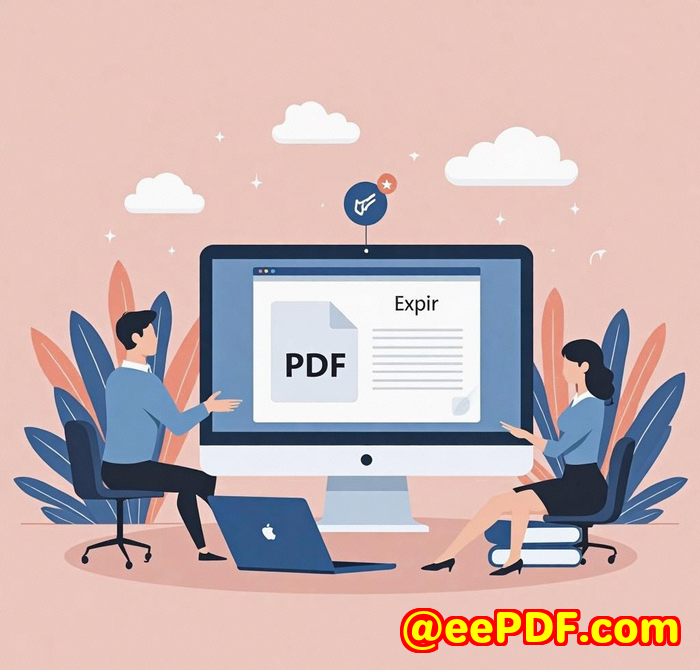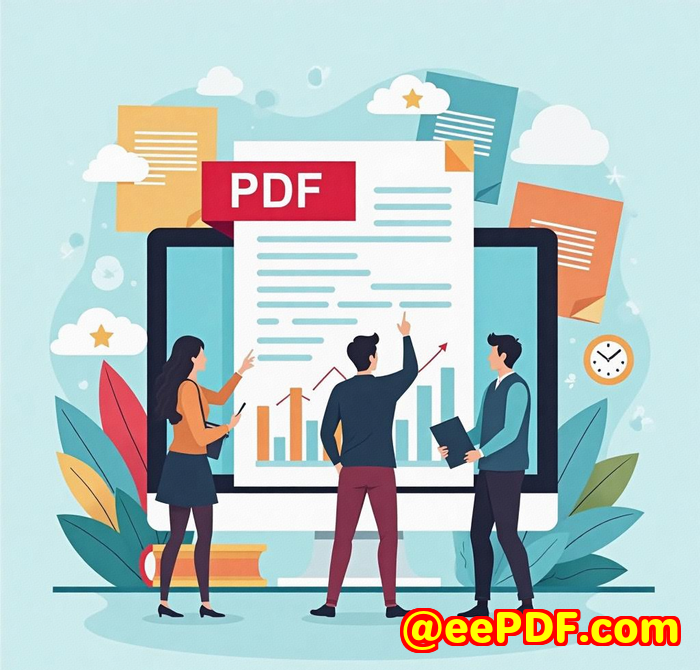Auto-Categorize Incoming PDFs Based on Content with OCR and Keyword Detection API
Auto-Categorize Incoming PDFs Based on Content with OCR and Keyword Detection API
Every week, I found myself drowning in a sea of PDFsscanned contracts, invoices, reportsall piling up in my inbox. The real headache wasn't just managing them but figuring out how to sort these files automatically without spending hours reading through each one. I'm guessing if you're in finance, legal, or manage large document workflows, you've faced the same frustration: how do you quickly get the right document in the right folder without lifting a finger?

That's where imPDF's Cloud PDF REST API for Developers seriously changed the game for me. If you need to auto-categorize PDFs based on their content, especially those scanned or image-heavy files, this tool has your back. It's designed for developers but honestly, even if you're not a coder, you can get up and running fast thanks to their API Lab that lets you test everything live.
Why Auto-Categorize PDFs Is a Must-Have for Document Workflows
Imagine this: you run a legal team receiving hundreds of scanned contracts weekly. Manually opening each file to tag it "Contract," "NDA," or "Invoice" wastes precious hours. Or picture an accounting department that receives monthly statements, purchase orders, and expense reports mixed up together. Without a smart system, everything slows down.
That's exactly the kind of pain imPDF's Cloud PDF REST API solves. By combining powerful OCR (Optical Character Recognition) with keyword detection, it doesn't just read PDFs it understands them. This means your incoming PDFs can be automatically scanned, analysed for relevant keywords, and then sorted into the right categories without you needing to move a muscle.
What Makes imPDF Cloud PDF REST API a Developer's Dream?
First off, it's not just about OCR. While OCR turns scanned images into searchable text, imPDF's API goes beyond by extracting specific data, recognising keywords, and even supporting complex PDF manipulations like splitting, merging, or securing files.
Here's a quick rundown of features that stood out in my workflow:
-
Robust OCR PDF API: Automatically extract text from scanned PDFs, making non-searchable documents instantly accessible.
-
Keyword Detection: Specify keywords or phrases that trigger automatic categorisation perfect for batch processing huge volumes.
-
PDF Extract API: Pull out images, tables, and text to use in your databases or workflows.
-
Convert to/from Various Formats: Whether you need Word, Excel, or PowerPoint conversions, or standardised PDFs for compliance, it's covered.
-
Security Tools: Apply encryption, watermark, or redact sensitive info without extra hassle.
-
Easy Integration: RESTful API design works seamlessly with almost any language or low-code tool.
The icing on the cake? The API Lab lets you experiment with your PDFs instantly online. No more waiting to build or test codesee what results you get in seconds and copy the working code straight into your project.
Real-World Examples: How I Used imPDF to Streamline Document Sorting
I took on a project where our client received thousands of scanned invoices and contracts weekly. Before, this was a manual nightmare.
Using the OCR PDF API, I turned every scanned document into searchable text. But it was the keyword detection feature that blew me away. I set up triggers like "Invoice Number," "Purchase Order," or "Confidential" that automatically assigned categories. Here's how it went down:
-
Incoming PDFs were uploaded via the API.
-
OCR extracted text from image-heavy files.
-
Keywords were scanned to identify document type.
-
Documents were automatically moved into pre-defined folders.
This saved the team at least 10 hours a week. No more hunting through PDFs or misfiling documents. Plus, combining the Extract API allowed us to pull invoice totals and due dates directly into their accounting software, eliminating manual data entry errors.
How Does imPDF Compare to Other Tools?
I've tried other PDF tools that claim to automate document sorting, but many fell short. Some only converted PDFs without intelligent content detection. Others lacked flexibility or required clunky manual setup.
imPDF's API is built by folks who know PDFs inside out. The depth of PDF manipulation tools combined with content analysis is unmatched. And because it's cloud-based, I don't worry about local processing limits or scaling issues. The pricing and free trial let you test before you buy, which is refreshing compared to locked-in licenses from legacy software.
Who Should Use imPDF Cloud PDF REST API?
This isn't just for developers but for teams looking to embed advanced PDF processing into their apps and workflows:
-
Legal teams managing contracts, NDAs, and discovery documents.
-
Accounting departments processing invoices, receipts, and financial reports.
-
Healthcare providers handling scanned patient records and insurance forms.
-
Government agencies digitizing archives and automating form handling.
-
Software companies building document management or workflow automation tools.
If you need reliable OCR combined with keyword-based auto-sorting, this API will save you countless hours.
Getting Started with imPDF Cloud PDF REST API
The best part? You can start using it immediately. Sign up, try out the API Lab for instant testing, and explore code samples on GitHub to integrate the API into your projects.
If you want to see it in action or kick off your own PDF auto-categorisation workflow, check out https://impdf.com/.
Custom Development Services by imPDF
Need something tailored? imPDF offers bespoke development across multiple platforms Windows, Linux, macOS, iOS, Android, and more. Whether it's creating virtual printer drivers, intercepting print jobs, or building custom OCR and barcode recognition modules, they've got you covered.
They work with a broad tech stack including Python, PHP, C/C++, .NET, JavaScript, and offer cloud and on-premise solutions. If your project needs specialised PDF processing, form generation, or security enhancements, reach out to their support center at http://support.verypdf.com/ for a consultation.
FAQs
1. How does imPDF's OCR handle low-quality scans?
The OCR PDF API is designed to process a wide range of document qualities, including faint text or skewed scans, improving text extraction accuracy over time with adaptive recognition.
2. Can I use imPDF Cloud API without coding skills?
Yes, the API Lab offers an intuitive interface to try API calls instantly without writing code, perfect for testing and learning.
3. Is it possible to automate categorisation based on multiple keywords?
Absolutely. You can set up complex rules to trigger categories when multiple keywords or phrases are detected in a document.
4. How secure is the document processing?
imPDF offers encryption, watermarking, redaction, and access restriction to keep your documents safe during and after processing.
5. What programming languages are compatible with the API?
The RESTful API design means it works with almost any programming languagePython, Java, PHP, .NET, JavaScript, and more.
Tags / Keywords
-
PDF auto-categorisation API
-
OCR PDF processing
-
Keyword detection in PDFs
-
Automate PDF sorting
-
Cloud PDF REST API for developers
If you deal with large volumes of PDFs and need to automate document sorting based on content, the imPDF Cloud PDF REST API is a powerful tool I'd recommend without hesitation. It's flexible, feature-rich, and simple enough to integrate quickly.
Start your free trial today at https://impdf.com/ and save yourself from manual PDF chaos.



